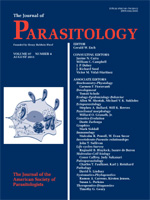A description and illustrations are given for Myrsidea povedai n. sp. from the black-and-yellow silky-flycatcher Phainoptila melanoxantha. The female of M. povedai is distinguished from those of other species of Myrsidea from Costa Rican passerine hosts by a unique combination of the following characteristics: (1) well-developed hypopharynx, (2) well-defined median gap in the rows of tergal setae and another gap between groups of setae on lateral side of tergites II–VII and the most central seta, and (3) enlarged metanotum with at least 23 setae. These characters place M. povedai close to Myrsidea campestris from Euneornis campestris and Myrsidea marini from Pezopetes capitalis (both from the Emberizidae). The female of M. povedai can be easily separeted from both aforementioned species by the abdomen without conspicuously enlarged tergites. Moreover, the male of M. povedai is characterized by a unique male genital sclerite, which is quite long (0.13–0.15), tapered apically, with a long median line, and without subapical processes. This is the first record of a chewing louse from this host and the first record of Myrsidea from the passerine family Bombycillidae. All 7 birds examined in Costa Rica in 2010 were parasitized with M. povedai. Mean abundance was 11.6, with intensity range 4–27 lice per bird.
How to translate text using browser tools
1 August 2011
Myrsidea povedai (Phthiraptera: Menoponidae), a New Species of Chewing Louse From Phainoptila melanoxantha (Passeriformes: Bombycillidae)
Oldrich Sychra,
Filip Kounek,
Miroslav Capek,
Ivan Literak
ACCESS THE FULL ARTICLE

Journal of Parasitology
Vol. 97 • No. 4
August 2011
Vol. 97 • No. 4
August 2011




